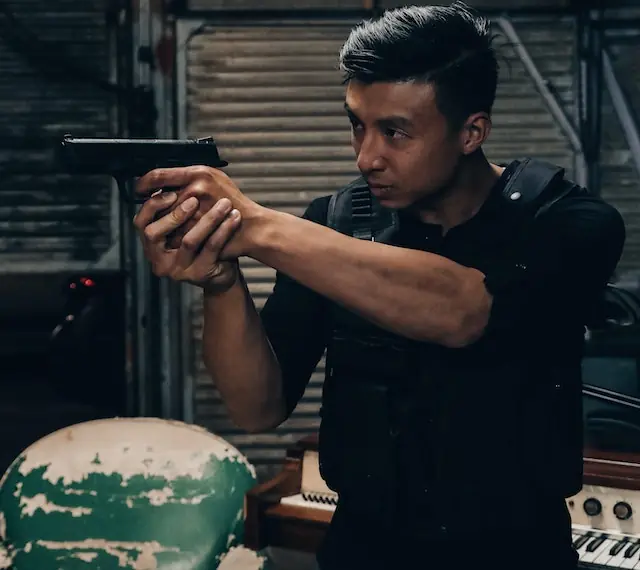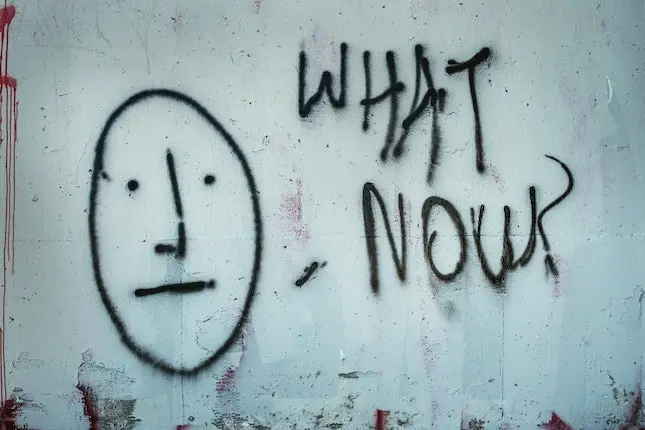Novel Tension Basics for Mystery Writers

Tension Creates Anticipation
You know that toward the end, your story will have a big scene between the hero and the villain. It will be tense. And you can’t wait to write the big battle. Whether it’s with weapons or wits, your hero must face down and defeat the villain.
Before your reader gets to that scene, you need to lead them through pages and pages of your mystery novel. Every scene needs tension to build anticipation for what comes next. That’s how you get your readers to keep reading until they reach that big scene.
Beginning writers have so much to tell and want to jam everything into the story. Without tension, though, your story will feel episodic without urging the reader on to discover what happens next.
You need tension in every scene. It doesn’t have to be as big as the final confrontation, and shouldn’t be. But building anticipation scene-by-scene keeps your readers wanting more.
Difference Between Tension and Conflict
Tension builds anticipation. Tension builds when you present the threat of something happening. Your reader feels the threat and wants the threat to be resolved. As an author, you create anxiety for the welfare of your protagonist sleuth.
Conflict is when the threat is happening. Once you resolve a conflict, you need to build new tension to keep your reader anticipating danger to your sleuth. That danger can be emotional, psychological, or physical.
So, to continue creating tension, you need to build anticipation no matter what happens in your story’s conflicts.
Make Every Scene Tense
Each scene is a mini-story that advances the overall mystery puzzle. Scenes build on previous scenes. As the story progresses, you heighten the tension by raising the stakes of what happens at the end of the scene.
Create scene dynamics that lead your reader through your character’s change.
Here’s the sequence:
- Entering emotional state of the point-of-view character
- Character objective. What do they want?
- Conflict. What impedes them from what they want?
- Motive for antagonism. Some understanding of the other character’s motivation.
- Character’s worldview. What belief system is he operating in?
- Tactic. What actions the character takes in the scene to achieve their objective. (Remember dialogue is action.)
- Turn. Does the character get what they want in the scene? What comes out of the conflict? What causes their emotions to change?
- Objective achieved. Yes or no?
- Exiting emotional state. If not the opposite of the entering emotional state, it must be different.
The tension pivot for the scene is the turn and the exiting emotional state builds anticipation for what comes next. When you alternate action and reaction scenes, you leave a question in the reader’s mind at the end of each scene. Think of the scene ending as a tiny cliff-hanger urging the reader to turn the page.
Scene Purpose and Tension
Know the purpose of each scene. This will help you create scenes that drive the story forward. To guide you through the scene as you write, create a one-sentence purpose statement. It’s a short statement of what happens in the scene.
George wants Jeanine to confess, but he has the wrong suspect.
With just that one sentence, you have an idea of the beginning emotional state, expectancy, and the ending emotional state, disappointment. The turning point will revolve around something Jeanine says or does that shows George he’s headed down the wrong path.
A clear statement like this helps you form the tension in the scene. It’s more explicit than a scene note like: George interviews Jeanine.
Tension Elements
As a writer, you have a choice of elements to build tension in a scene. When you vary scene tension elements, you’ll avoid a repetitive feeling to your story. The idea is to mix and match the elements in each scene.
- Is there internal conflict with the protagonist character?
- Is there external conflict with the protagonist and an outside force?
- Is there something left “unsaid” between the characters in a scene?
- Do the characters in each scene have well-defined motivations that the reader knows?
- Does the reader know what is at stake for every main character in the scene?
- Is something preventing the protagonist from succeeding?
- Does the reader know more than the protagonist?
- Is there a sense of anticipation in every scene?
- Does anticipation build throughout the story, leading to the climax?
Create hooks at the beginning and end. Use start late, leave early to plunge your reader into the scene and build a hunger for more at the end.
Use your scene point of view character’s emotion change to create the tension. Make sure the emotion they feel, and the reader feels, is different at the end of the scene than it was at the beginning. If you miss showing the beginning emotional state, the change won’t feel as strong at the end of the scene.
Know the turning point high moment in the scene. Show the main character changing from one emotional state to another. You bring the reader along from point to point.
Raise the Stakes Scene by Scene
As your mystery progresses, each time your protagonist sleuth enters a scene, there are stakes. Writing each scene with stakes that your hero will win or lose builds tension. As you get closer to revealing the villain, raise the stakes in each scene.
When the results of the scene are crucial, your reader can’t help but want to know more. You build anticipation for what will happen and the consequences of failure.
The Tension Formula
Tension is the ingredient that moves your reader on, eager to find out what happens next. In order to create tension, you need three ingredients:
- The reader must care about the character. Building empathy for your character is the cornerstone of tension. If the reader doesn’t empathize with the character, caring about what could happen, all is lost.
- Consequences. The reader needs to know the impending consequences of a decision or action. If your character makes a wrong decision or her actions are inadequate, your reader needs to know what could happen.
- Each conflict leads to more tension. Each obstacle or conflict with known consequences leads to more questions. How will your character respond to their failure? What is at stake if they lose? Follow conflict scenes with reactive scenes to set up the new tension.
If you are struggling to get your mystery written, Write A Killer Mystery is your answer. It’s an online course specifically for mystery writers that leads you from story idea to The End.
Photo by Joel Muniz on Unsplash




